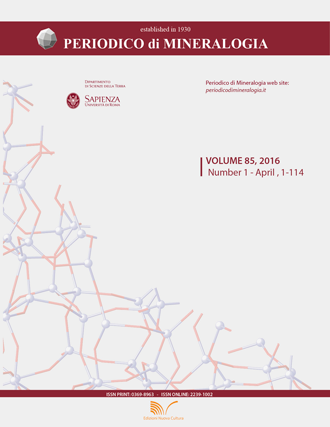Archaeometric characterization of Roman volcanic millstones from Messina territory (Sicily, Italy)
DOI:
https://doi.org/10.2451/2015PM471Keywords:
Archaeometry, Roman Age, millstone, volcanic rock, SEM-EDS, XRFAbstract
In this paper we present the results of petrochemical study of Roman cereal millstones and relative elements made
of volcanic rocks, found in various archaeological sites of Messina. Fifteen samples dating from the III century AD and one
from the second, also dating from the II–III centuries AD, were characterized through archaeological, petrographic,
mineralogical and geochemical approach.
On the petrochemical point of view the raw materials of the studied millstones are mainlyvolcanic rock
characterized by Na-alkaline affinity with intraplate geochemical signature. Only two samples belonging to the K-alkaline
seires showing volcanic arc signature. Comparison with literature data of similar volcanic rocks, allowed to constrain the
volcanic site of provenance. Most of the intraplate samples are mugearites and benmoreites from Mt. Etna, the other are
peralkaline-trachyte from Pantelleria Island and alkaline basalt from Linosa Island. The two arc-type samples derived
instead from Islands of the Aeolian Archipelago. The petrochemical study of millstones improve the archaeological
research, confirming the ancient communication routes and trade networks in the Mediterranean Region and highlighted the
use of volcanic rocks from Sicilian area, during the Roman period, as very important sources of raw materials for
millstones.


